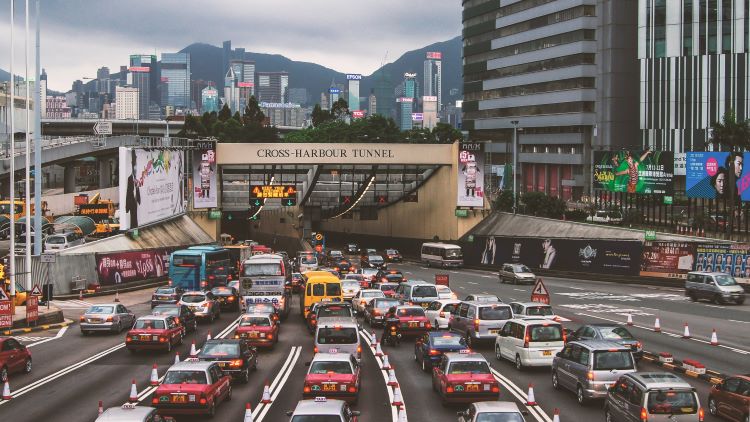The consequences of air pollution are rarely addressed until the very last minute. It’s only when cities smog up or occasional studies spotlight alarming figures, that governments transition into a state of damage control and seemingly begin implementing an action plan.
However, air pollution is not a sporadic issue resulting from individual crisis points. For example, the New Delhi smog crisis of November 2019 was closely linked by the media with the Diwali festive season and many sought to reference this as a catalyst for critical levels of pollution – yet Delhi’s air quality has been a consistent cause for concern for a long time now. Air pollution is a deeply complex socio-economic problem that needs constant comprehensive policy-led solutions tailored to individual regions depending on the factors at play and not reactive measures on the back of incidents.
While it is understood that over seven million people die each year across the world, it is often disproportionately skewed towards developing nations. This is not a coincidence as most causation factors for air pollution are a result of industrialisation. With developing nations still focused on expanding their economies, they are largely reliant on carbon-based fuels for growth – including coal and oil. Developed countries, on the other hand, have the economic ability to transition into cleaner energy systems and technologies, as they are already past the stage of industrialisation.

The Paris Climate Accord recognises the different approach required by developed and developing countries for climate action, without the expense of curtailing the economic growth of emerging economies. For instance, most countries in sub-Saharan Africa are dependent on natural resources for their revenue and foreign exchange, while countries like India and China, as manufacturers, depend on oil to power their industries. As a post-industrialised group, Europe has already transitioned from an industry-based economy to a technology economy.
Therefore, while a compressive worldwide action is required to combat the pollution crisis to collectively reach the Paris climate targets, there cannot be a single template action plan to implement globally. It requires a meticulously tailored approach that is sensitive to local economic and social interests, but also ambitious, visionary and decisive enough to transition to a carbon-neutral economy in the long run.
Sustainable Urbanisation
Cities are the bedrock of global decarbonisation as they account for 70% of worldwide emissions. Buildings alone account for around 40%, or 50% if the construction industry and its upstream value chain are included. Urbanisation is increasing at lightning speed, up to 68% by 2050 versus 55% today, which represents nearly a doubling of the existing building stock. It is vitally important that cities and buildings address the challenge immediately and this is something businesses must confront and assist with. This is going to require a cross-sector collaboration of ideas, facility, and resources from the public and private sector – in which countries must pull together as the world enters one of its most crucial periods – the “decade of delivery” (2020-2030) regarding the UN’s SDGs targets established at the 2015 General Assembly.
In addition to the ULEZ, other cities have been working to address factors associated with rapid urbanisation. Paris allows for free use of public transport during major pollution events, while Zurich has limited its number of parking spaces and built more car-free areas such as plazas and pedestrian streets. These small changes add up to have a big impact over time and will be influential in addressing the world’s pollution problem.
Urbanisation should not be deemed a problem, but instead, a solution to pollution. This can only be done with refined plans in place, accounting for factors affecting the environment while also encouraging agglomeration. This should lead to developing networks and infrastructure that cities can share with one another.

Ethical Practices
Aside from corporate responsibility, members of the public are also to hold greater accountability. It is a mistake to rely solely on government policy measures to tackle pollution issues whilst society maintains the same practices. Instigating community-led action can create grassroots change to help create maximum micro impact. The best way forward is to create an education and awareness exercise involving the community.
According to the World Values Survey, the higher a person’s level of education, the more likely they were to express concern for the environment. By implementing education to form part of the solution, people will be better equipped to make more conscious choices, undertake decisions and engage in actions that can be part of the larger solution.
From our diet to our household energy efficiency, we have such a critical role to play in becoming the last generation to be plagued by the threat of global warming and pollution. This includes lifestyle measures such as switching to renewable energy sources, weekly collections of food waste, sustainable practices with recyclable materials and greener transport choices. Recent years have seen small shifts made by the few – now it needs major shifts made by the mass when it comes to consumer and lifestyle choices. In instigating slight changes to our everyday lives, the snowball effect it will have both domestically and internationally will help lower the global emission rate and provide a platform for greater innovation and ideas in how to further close the pollution gap.
The UK
In this country, over 34,000 people are dying early each year because of air pollution, as per a study by Birmingham University. This is emphasised by data from the UK government, which revealed that 83% of reporting zones across the country still have illegal levels of air pollution. While it’s quite different from the pollution levels in China or India, it is nevertheless an appalling figure for a post-industrial economy.
Surface transport is the biggest contributor to the UK’s air pollution levels. One way the government has acted on this problem is via the introduction of the Ultra-Low Emission Zone (ULEZ) which came into effect in 2019. To reduce pollution and promote a more environmentally friendly capital, the ULEZ covers central London and charges drivers who enter the zone in addition to the standard congestion charge.

In addition, the government also brought forward its ban on buying petrol and diesel cars from 2040 to 2030. This will mean that people will only be able to buy electric or hydrogen cars and vans once the ban comes into effect, a measure that will lead to a more sustainable future.
The 2020 United Nations Climate Change Conference (COP26) is being hosted by the UK in Glasgow in November and this is an incredible platform for the country to announce bold and decisive actions to address climate change and air pollution issues in the UK through comprehensive policy proposals that can tune in our economy and society towards a carbon-neutral future.
About the author:
Natasha Mudhar is the Global Chief Executive of Sterling Global, a multi-disciplinary, international business consultancy with a robust communications backbone, established in 1995. Natasha also runs The World We Want, a global impact enterprise established with the mission of unlocking the collective impact of people, ideas, networks and technologies to accelerate the pace of progress towards achieving the UN’s Sustainable Development Goals by 2030.
Opening picture: Climate change increases extreme weather with devastating consequences for life on our planet. Photo by Gellinger














Show Comments +